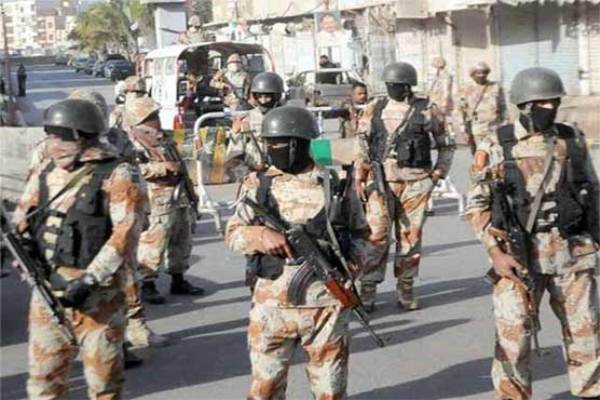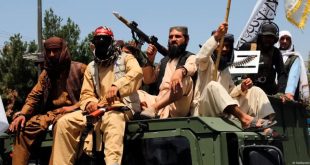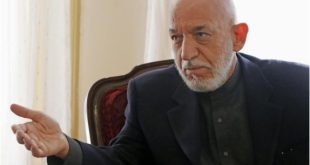By Zulfiqar Shah-Sindhi of all faiths and paths, reside in all continents. There are Sindhi that are historically submerged in some nations, like in Kingdom of Saudi Arabia, Sindhi who are now indigenized there with the tribe or clan name Al-Sindi. Some Sindhi families are submerged in Java and Sumatra islands; and some are submerged in Russia, living in Moscow having combination of names and family names of Sindhi and Russian. They migrated from Sindh in 1800s. There are indigenized Sindhis in various African countries. A large number of Sindhi live in Diaspora after partition of united India, and thereafter during last seven decades are in Europe, Asia Pacific, Middle East, Africa, and North America. Sindhi are indigenized in Afghanistan with 15000 population, some villages of Sindhi are there in Chittagong and Khulna Divisions of Bangladesh where they are indigenized. Sindhi are second largest business community after Jews in the world, which includes those who directly migrated from Sindh to various countries, and those who routed the travel from India. This still is happening. Besides, an exodus of Sindhi Hindu due to the harassment caused in 1948 by non-Sindhi and thereafter is taking place towards India and some other countries.
Dutch were the first among the European nations that colonized South Asia. Goa in India and Gundz between Gawadar and Pasni on the Balochistan coast were the areas of this region that were inhabited by Dutch. Britain came later. Dutch settled in Gundz and submerged in Baloch nation, and are called Dutch Baloch.
Sindh and Balochistan, for centuries, have remained one country, with combined capitals and headquarters in Kalat, Hyderabad, Sukkur, Brihamanabad and Multan during various periods of the history. Southern Punjab, the Siraiki land, has also remained part of that Kingdom for centuries, and shared common centre of Indus civilization, which earliest was centered in Meher Garh (5000 BC). The adjoining districts to Meher Garh in Balochistan, are Balochi, and link Sindhi speaking Baloch plains of Balochistan. First excellence in Urbanization of human history, Moen Jo Daro (3000 BC) is located in the centre of Sindh on the right bank of river Indus. Indus Civilization or Sindh Civilization has its spread up to Tibet in China in the north; eastern Afghanistan and Kandahar; Gujarat and Rajasthan states of India and in Haryana state, and has its borders in the east up to Cambodia. Between Myanmar to Cambodia, it infuses with Yellow river civilization of China, therefore, historically and academically this area is called Indo-China.
The Indus civilization has another city Harapa, in Punjab of Pakistan; however the capital of the civilization is Moen Jo Daro (Sindh), because of being on the Banks of river Indus and near the Sea, is exceptionally urbanized due to being trade centre of the civilization.
Indus civilization has hundreds of Indus sites in Kutch, Bhuj, more than that of in Sindh. In that context, the hitherto held researches proves that Kutch, Bhuj, and some other areas of Gujarat in India have more Indus sites if compared with Sindh, Balochistan, Punjab, and elsewhere. In Gujarat new excavations of the sites were successfully undertaken by 2013; however the excavations in Gujarat are also under process. Besides, one Indus site was discovered by 2012-2013 in Haryana state of India.
Indus, that begins in Tibet (in China), shares its name Sindhu with the land Sindh, which today is a federating state in Pakistan; albeit historically have remained a country for centuries. It is academically established that Moen Jo Daro was capital of Indus civilization, led by the King Priest. Apart from so many heights of urbanization, the city was having covered drainage and sanitation, and also was having a swimming pool, called Great Bath. The structure there has also arrangements of bathing norms including dressing and other necessities. It is shocking to see the civilization disconnect between Indus Civilization (Sindh-Balochistan) and the West. Europe and North America, excluding the snowy regions, have a history of weekly bathing that was practiced until 1960s. Americans were first among the Westerns who started daily bathing in 1970s, and thereby rest of western societies followed American bathing routine. Perfumes in Europe were necessity due to this delayed bathing; hence France did mastery in putting foundations of perfume. Perfumes for decades have remained an important source of exports for France.
Sindh and Balochistan today are thankful to the United States of America for its support to the Government of Sindh for rendering support for the protection, renovation and preservation of archeological sites in Sindh through its Islamabad Embassy and Karachi Consulate. Sindh and Balochistan, once Buddhist, are also grateful to Japan for its support to Sindh to protect Indus civilization through protecting its capital, Moen Jo Daro by the means of coating it. Unfortunately, the funds released to the Government of Pakistan were not used for five years. Moen Jo Daro still requires appropriate initiatives for its protection. Sindh and Balochistan are also thankful to Russian Federation, which through Islamabad Embassy participated Moen Jo Daro initiatives by Pakistan People’s Party (PPP) Chairman Bilawal Bhutto Zardari, son of great Sindhi leader martyred Benazir Bhutto. Balochistan and Sindh are also thankful to the Italy for returning back the archeological assets of Balochistan, which Italian authorities collected while acting against international mafia of archeological smugglers. Sindh and Balochistan welcome previous US President Bill Clinton’s remarks on Moen Jo Daro and the people of Indus civilization during his presidential address; and also for being concerned for civilization, culture and Sufism in Sindh and Balochistan, the mainland Indus civilization.
In Sindh, Urdu speaking Sindhi and Sindhi speaking Sindhi shared differences over development, which also underwent violence for lesser than two years in 1980s in low-scale violence. Gradually, it started turning into tolerance, and between 2000 and 20012 it transformed into accommodation of both.
Sindh and Balochistan together like Khyber Pakhtunkhuwa have received Afghan refugee of cold war, who lived for over a couple of decades on the lands, and a large number of them is still staying in Sindh and Balochistan. Balochistan, recently through Sardar Mehmood Khan Achakzai said that Khyber Pakhtunkhuwa belongs to Afghan, and the Afghan refugees are rightful while getting refuge in Khyber Pakhtunkhuwa. The reconstruction of Afghanistan carried out by international community led and participated by USA, and other UN Security Council members has created conducive environment that a considerable number of Afghan refugees have returned Afghanistan until 2012.
Sindh is facing serious crises of demographic pressure in the form of refugees and illegal immigrants from across the world because Government of Sindh is not entitled to legislate, play determining role and decide the refugee status, settlement as well as naturalization of the foreigners. Balochistan and Khyber Pukhtunkhuwa are also undergoing the same situation. Punjab is the only province in Pakistan, which almost does not receive refugees. Even Operation Zarb-e-Azab by Pakistan Army on the insistence of USA has caused displacements, which were directed towards Sindh. Punjab refused receiving the internally displaced persons of flood in Khyber Pakhtunkhuwa, like it did during the settlement of Afghan refugees of cold war.
Sindh has cordially received Baloch displaced persons due to civil war in Balochistan. Sindh, like Balochistan, previously received Iranian refugees due to Islamist revolution in Iran. Africans including Sudanese, Nigerians, as well as Palestinians are living in Sindh including a limited number of far-eastern refugees.
Hundreds of Tibetan and a few thousand Poland (Pol) refugees got settled in Sindh between 1920 and 1940s. Some Tibetan lives in Karachi. Refugees of Poland naturalized in Sindh. Besides, due to security reasons, some of Jews of Karachi have preferred to claim for themselves a Zoroastrian (Parsi) identity. They are not counted in census. Gorkhas from Nepal are also localized in Karachi.
Hundreds of thousands Bangladeshi illegal immigrants are living in Karachi. Until 2012, 200,000 ethnic Rohengyan Muslims have illegally entered Sindh and sought refuge. The worst aspect of this is despite documenting these illegal entrants; the National Data Base Authority (NADRA), a central government agency, issues them citizenship documents within shorter span of time. Government of Sindh is not consulted for that matter. Even some illegal Afghans including the very recent ones have sought Pakistani citizenship along with the travel documents most of whom are religious extremists.
Sindh is already undergoing demographic issues, and peopling of Sindh has become a real challenge with reference to the people’s sovereignty. Taking care of hundreds of thousands refugees since three decades and receiving the new ones, with swift citizenship facilitation, is an act of ethnic cleansing by tactically converting aboriginal, indigenous and indigenized majority into minority besides causing gradual exodus of Hindus from Sindh. Moreover, cities of Sindh cannot afford further massive influx of refugees and illegal entrants because number of immigrants and settlers from within Pakistan come in hundreds of thousands every decade. This further is intensified when Pakistani armed forces entrepreneur sector has acquired hundreds of thousand acre lands in Karachi, Hyderabad, Sukkur, and other places to develop mostly high-rise buildings for accommodating hundreds of thousands more from outside Sindh. This no doubt includes various schemes like Bahriya Town, the largest one in Karachi.
Entry of terrorists associated with Al-Qaida, ISIS and other groups has remained frequent, identified in some cases and have always been posing security risk, and threat to greater extent. Therefore exclusive authority for settlements from within Pakistan particularly in Sindh needs the decentralization of the process of immigration, naturalization and refugee resettlement. It is needed to mention that Punjab alone in Pakistan does not have considerable number of foreigners as well as internal migrants from Sindh, Balochistan and Khyber Pakhtunkhuwa. And, Sindh alone, apart from world outside, receive hundreds of thousands from northern Pakistan, particularly from Punjab. Sindh and Balochistan have been demanding the protection of their demographic sovereignties through legislation, and procedural empowerment.
Sindh is the only federating province in Pakistan, in whose legislature recent settlers are allowed to run elections, become members of Sindh legislature and also become cabinet ministers. Sindh and Balochistan have been demanding new legislation for the vote rights in the historical lands to those who have not got birth there. The settlers’ participation for the provincial and federal legislatures should be barred. After ten years of their settlement, they should be given right to run elections for the local government, and those who get birth in Sindh may be legitimize to become members of legislatures after process of elections.
During 2014 – 2016 Punjab Police, Pakistan Rangers – Punjab and Pakistan Army based in Punjab have violated sovereignty of Sindh by undertaking military actions in Sindh on the orders of Punjab government. In federations across the world, federating states or province do contribute their Sovereignty to create a Federation in the Sovereignty of Republics. There is no land or territory within Pakistan which is called Pakistan. Sindh, Balochistan, Punjab and Khyber Pakhutkhuwa together, willingly or unwillingly, form the entity named Islamic Republic of Pakistan.
Shah is Sindhi refugee journalist, analyst and activist currently staying in India. www.zulfiqarshah.com
 Afghanistan Times
Afghanistan Times




